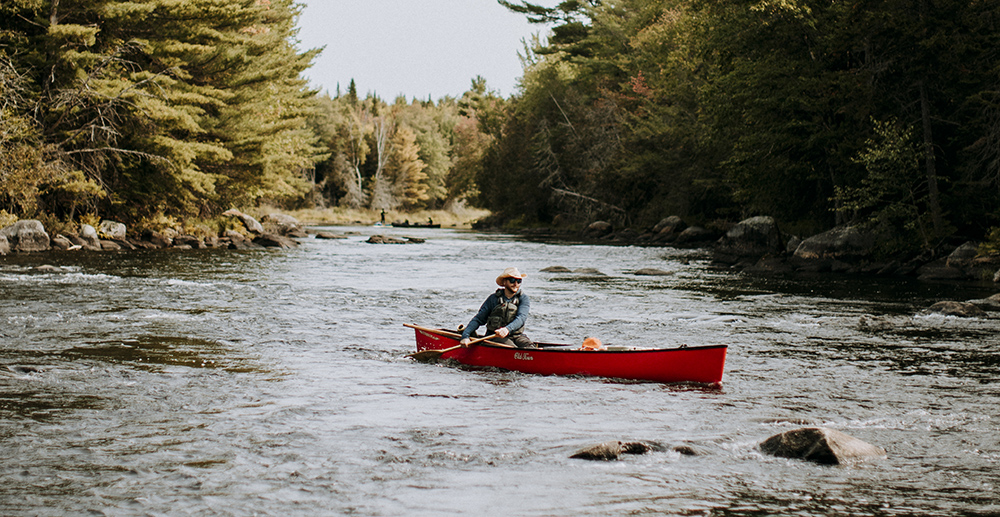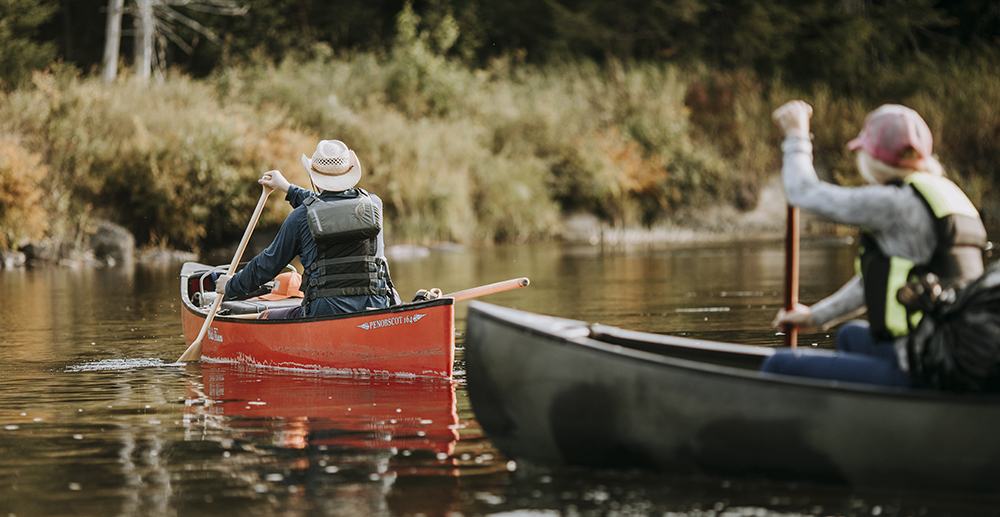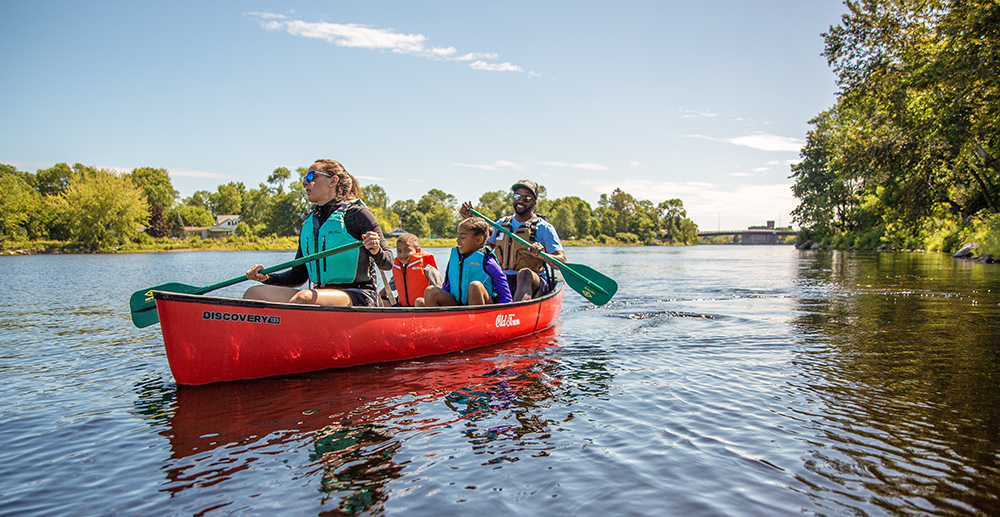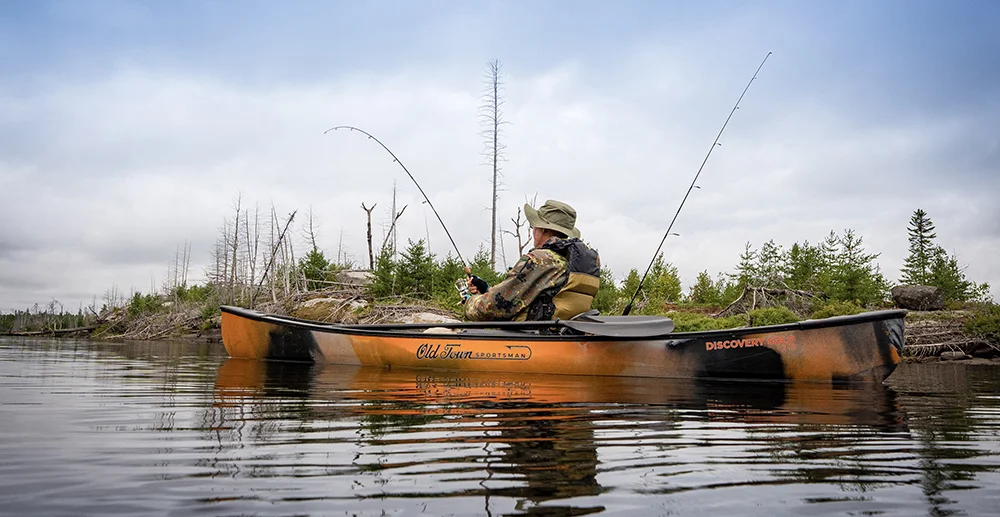How to Choose the Best Canoe
There are a lot of factors to consider when buying a canoe. The size, shape, and materials of the canoe will affect how it handles, and what situations it's best suited for.
Different dimensions of a canoe will affect its performance. Length gives you speed, but width gives you stability. A well-built canoe will have a length, width, and depth that help it perform well for its purpose. That purpose might be fishing, long trips, or turbulent rivers.
Starting with the type of canoeing you're planning for can help you hone in on the right canoe, so that you don't get lost in the details. For a good start in choosing a canoe, you may want to look at a buying guide that can walk you through your decision, step by step.
Learn more about the types of canoes, and how factors like length, width, the shape of the boat, and more can affect a canoe's performance.

Canoe Types
For any canoe, the design of the boat carries some trade-offs. A boat made for fishing isn't going to do great sailing in open water. A boat made for swift rivers isn't going to have the kind of stability you need for fishing. Here are a few of the most common types of canoe:
Tripping canoes
Tripping canoes are built for long-distance trips. You may also hear them called touring or expedition canoes. These are made to haul gear (and sometimes multiple paddlers) over long distances.They tend to be longer and narrower than others, to track straight and travel faster.
Sporting canoes
Sporting canoes are designed for hunters and anglers. They tend to be shorter and wider than others. This helps them act as a stable platform where people can easily hunt and fish. They're more supportive when you need to stand up, and they're better-suited to handling the disturbance caused by reeling in fish.
Recreational canoes
A recreational canoe is a general-purpose boat that's best for paddling on calm water. These are great family boats, and the best canoes for birding, photography, or taking day trips out onto a lake. They're stable, and easy to paddle. They tend to be mid-sized, and while they can be versatile, they're usually not meant for intensive fishing, rough waters, or high speed.
CANOE SIZES AND DIMENSIONS
Each dimension of a canoe affects how it performs and handles. Whether you need more width, length, or depth depends on whether you need speed, stability, or a combination of the two.
Length
A canoe's length affects how it moves through the water. Longer boats track straighter. They move faster, glide farther, and can carry more weight than shorter kayaks. However, shorter kayaks can be much easier to maneuver.
Width
Wider canoes tend to be more stable. This makes them a great platform for activities like fishing, where an exciting catch can quickly lead to imbalance and an easy tipping. They're also great for pursuits like photography, where steadiness is key. On the other hand, narrower canoes tend to be faster, with better paddling efficiency.
Depth
Depth is measured from the top of a canoe's side rails (called gunwales) to the boat's bottom. Deep boats can help keep water out while carrying heavy loads. However, boats with high sides will also be more affected by wind.

Canoe Designs and Shapes
Of course, there's more to canoe design than simple dimensions. Other aspects of the boat's shape affect how it moves and handles. Different shapes are great for different types of paddling.
Hull Shape
The bottom of the canoe affects its stability. There are actually two types of stability for a canoe. "Initial stability" refers to how well the boat stays upright in smooth water. "Secondary stability" refers to how hard the boat is to tip in rougher water. Generally speaking, curvature helps a boat stay upright when it's getting tossed around a little, but a flat bottom makes it easy to keep your balance when the water is smooth. Just like with length and width, there are a lot of hull designs that compromise between flat and round bottoms. These different shapes make for boats that shine in different situations.
Flat-Bottom Canoes
Flat bottoms have lots of initial stability. They're great in flat water, and work well as fishing canoe. They're easy to turn, since most of the hull is above the water line. But once you start loading them down with gear, they get a little slower.
Rounded Canoes
Rounded bottoms don't have a lot of initial (flat water) stability, but they have great secondary stability. That means they perform very well in rough water conditions. These canoes tend to be made for high-performance floats through rapids.
Shallow Arch Canoes
Shallow arches compromise between a flat and round bottoms. They offer decent stability in smooth waters, and great stability in rougher waters. They glide and track better than flat-bottom boats, as well. This is the most common canoe, and it stretches far back through history to when canoes were made of birch bark or wood and canvas.
V-Bottom Canoes
V-bottom boats are similar to shallow-arches, but right in the middle, they've got a more defined line. Like the name suggests, it's less rounded looking, and more like the letter V. These boats have even more maneuverability and tracking than shallow-arch boats, and they provide a solid blend of stability in smooth and rough waters.
Rocker
Another design feature that affects performance is the rocker. "Rocker" refers to the curvature along the length of the canoe. Some canoes form a pretty straight line from bow to stern (aka front to back). Others will look more like an archer's bow, with a lot of curvature along the length of the boat. The more rocker a boat has, the shorter it'll act. If just the very middle of the boat is sitting in the water, then it will behave more like a short canoe, with easy turning but worse tracking. A slight rocker can add a little maneuverability to a long boat, without sacrificing too much tracking.
Side Shape
The shape of the sides affects how a canoe handles, as well, in a trade off between enhanced stability or easier paddling.
Tumblehome
Tumblehome canoes curve inwards as they go up. The sides of the canoe will point in towards the paddler at the top. A tumblehome curve can make it easier for a paddler to reach over the side and get a proper vertical forward stroke. This can be especially useful when trying to paddle a wider boat. An extreme tumblehome shape can make a canoe a little less stable when leaning, but generally a slight tumblehome shape doesn't affect stability much at all.
Flare
Flare canoes have an opposite shape to tumblehome. The sides flare out so that the canoe is widest at the top, and narrows at the bottom. A flared canoe is extra stable when leaned. You can usually lean a flared canoe all the way to the sides without issue.
Straight
Straight canoes have sides that go straight up and down. These sides compromise between the stability of a flare and the paddling ease of a tumblehome.
Canoe Materials
Canoes go back thousands of years and have been seen all over the world. They've been found in the Netherlands, in Nigeria, and in east China, all dating anywhere from 8,000 to 10,000 years old. Many of the earliest canoes were "dugout" canoes made from hollowing out enormous logs. Throughout history, these boats have also been made from birch bark, or canvas stretched over frames. Today, most canoes are made out of various synthetic materials. These synthetics all have their own advantages and drawbacks. Whatever your canoe is made from, it's important to store it properly to help it last as long as it can.
Polyethylene
Polyethylene is a very popular construction material. It can build some of the best canoes in terms of toughness and affordability, especially when constructed using a three-layer process. The smoothness of polyethylene allows it to slide easily over rocks, as well. These canoes can be on the heavier side, but they're also designed to take a beating and last a long time. Old Town Discovery and Penobscot canoes are made of three-layer polyethylene, and their durability has made them a favorite for decades.
Kevlar
Many popular composites contain Kevlar, which can help a canoe to be strong and lightweight. However, finding the balance between "strong" and "light" can be tricky with Kevlar, because it starts adding weight in a hurry. And while Kevlar allows for a lot of flexibility in terms of canoe shape, it can also get expensive quickly.
Fiberglass
Fiberglass was one of the earliest composite canoe materials, and it's still widely used today. Fiberglass is made from woven cloth or chopped fibers infused with resin. Fiberglass can be made by hand, or sprayed into a mold. (Hand-laid models are usually lighter, but more expensive.) Fiberglass isn't as tough as some other materials, but it's also fairly low-maintenance, relatively inexpensive, and easy to repair.
BEST BEGINNER CANOE
One of the best canoes for beginners is the Discovery 133.This shorter, wider canoe is easy to handle and offers great stability. At the same time, its three-layer hull is a tough nut to crack. The nylon web seating is comfortable, making it easy for beginners to put time without cramping up or getting tired. Short, maneuverable, and strong, the Discovery 133 is excellent for people dipping their toes into canoeing.

BEST FAMILY CANOE
One of the best family canoes out there is the Saranac 160. Two contoured seats offer plenty of comfort for adults, and a center bench seat offers room for a small passenger or two. With a flat bottom and a weight capacity of up to 850 pounds, this stable canoe can hold a family of 4 with ease. Tall, straight sides offer safety and security for younger canoers (or anyone who's a little nervous about getting on the water.) Rod holders offer a chance to get a little fishing in, while there are plenty of storage trays and cup holders to keep kids occupied and satisfied.
BEST CANOE FOR DOGS
Canoeing is a great opportunity to bring your dog along for an adventure, and a stable canoe with good weight capacity can make canoeing with dogs a breeze. All you need are a spacious cockpit and a stable ride. The Discovery 158 provides plenty of room, great weight capacity, and a solid ride for your four-legged friend.
BEST CAMPING CANOE
Canoe camping is a great way to spend time, but it definitely comes with some special requirements. You need a boat that's rugged enough to spend a lot of time on the water with you. You need space and weight capacity for your gear. And you need a boat that's long enough to cut through the water with a solid glide. The Discovery 169 is built for long distances, and made for efficient travel even when it's loaded down.
BEST FISHING CANOE
Anglers need a lot of stability and enough weight capacity to handle gear. It also helps to have a comfortable seat, since you're going to be sitting in it for a good long while. A spacious hull never hurt anyone, and if you can have rod holders for trolling, that's even better. The Discovery 119 has long been a favorite for solo paddlers for fishing, and the Sportsman Discovery Solo 119 takes all of the features that made the Discovery 119 a great fishing canoe and makes it into a perfect one.

BEST HUNTING CANOE
Hunting from a canoe gives you stealth, mobility and access, allowing you explore new and different hunting spots, whether you're a duck hunter or a big game hunter. The Discovery Sport 15 is a great canoe for your water-accessed hunting pursuits. A versatile platform, the square stern design of the Discovery Sport 15 can be paddled or motored. Mount your favorite electric trolling motor or gas-powered outboard (up to 4 HP) motor to the transom. With ample space and impressive capacity, the Sport 15 is one of the best canoes for hunting out there.
A BOAT FOR EVERY OCCASION
No matter why you hit the water, there's a canoe for you. Maybe you want to take your fishing game a little further. Maybe you want to introduce your kids to paddling. Or maybe you just want to go have a nice day on the lake. As long as you have fun and stay safe, there's no wrong way to experience canoeing.






